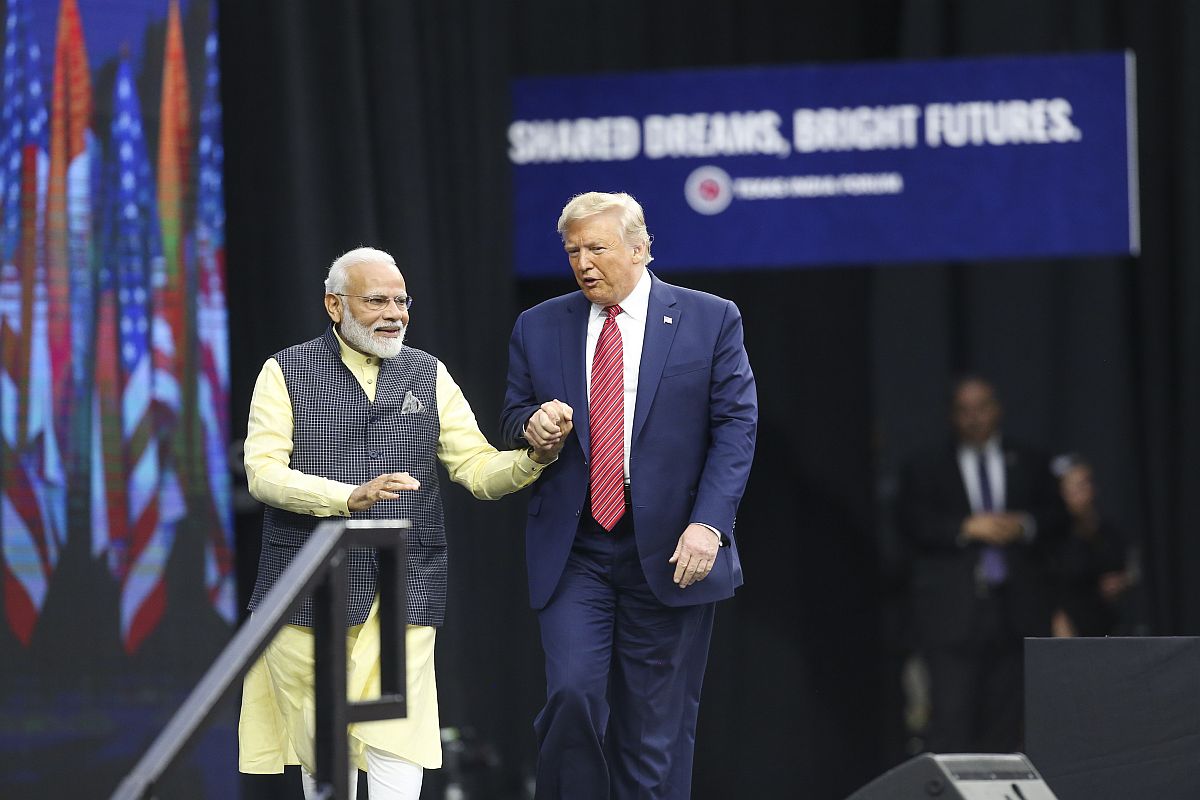Moscow, Washington agree on joint steps to restore diplomatic missions
Moscow and Washington have agreed on joint measures aimed at ensuring the uninterrupted financing of diplomatic missions in both countries, the Russian Foreign Ministry said.
Under the Trump Administration, the United States has become the second-largest arms supplier to India, growing from virtually no arms sales a decade ago to more than $20 billion today, a White House official said.

Prime Minister Narendra Modi and US President Donald Trump (File Photo: AFP)
Donald Trump has elevated America’s ties with India and solidified the growing partnership between the two countries in ways not seen in any previous administrations, said the White House on Monday and asserted that the US President will continue to build this critical partnership in the years to come.
“President Trump has prioritised US-India relationship and worked to expand all facets of the partnership over the last three-and-a-half years,” a senior administration official from the National Security Council of the White House told PTI.
Advertisement
The official said that given the two countries’ democratic foundations and their mutual interests in rebuilding the global economy following COVID-19, diversifying global supply chains, and ensuring the Indo-Pacific region remains free and open, President Donald Trump will continue to build this critical partnership in the years to come.
Advertisement
The White House official also noted that that the President has enabled India to become the first non-treaty ally to be offered an armed MQ-9 Unmanned Aerial System.
He said Donald Trump’s historic visit to India on February 24-26 this year had elevated the relationship to a Comprehensive Global Strategic Partnership and added that Prime Minister Narendra Modi was one of the first foreign leaders to visit the White House after Trump took office on June 26, 2017.
The official also mentioned the two mega events — “Howdy, Modi” in September 2019 in Houston, Texas and “Namaste, Trump” in February 2020 in Ahmedabad, Gujarat — where the two leaders shared the stage together.
“These gatherings boosted our people-to-people ties and highlighted the warm personal relationship between the two leaders,” the official said.
Trump’s Indo-Pacific strategy prioritises closer cooperation between the United States and India to secure a free, open, inclusive, peaceful and prosperous Indo-Pacific region, said the official.
He added that President Donald Trump has strengthened all aspects of US-India security and defence cooperation to build a comprehensive, enduring, and mutually beneficial defense partnership.
Under the Trump Administration, the United States has become the second-largest arms supplier to India, growing from virtually no arms sales a decade ago to more than $20 billion today, the official said, adding that earlier this year, the US and India concluded $3 billion in defence sales, including MH-60R naval helicopters and additional AH-64 Apache attack helicopters.
“To bolster India’s role as a net provider of security in the Indo-Pacific, the Trump administration has lifted restrictions on the provision of sensitive defence technology, enabling India to become the first non-treaty ally offered an armed MQ-9 Unmanned Aerial System,” the official said.
“As global leaders with vibrant democracies, the United States and India have cooperated to respond to the COVID-19 pandemic. US and Indian pharmaceutical companies have collaborated to expand global supplies of critical medicines and are cooperating on vaccine development,” the official added.
Besides, the Trump administration, India has also received a strong bipartisan support from members of the US Congress against the recent Chinese military aggression in Ladakh.
Indian and Chinese troops have been locked in a bitter standoff in several areas along the Line of Actual Control (LAC) in eastern Ladakh since May 5. The situation deteriorated after the June 15 Galwan Valley clashes in which 20 Indian Army personnel were killed and an unconfirmed number of Chinese soldiers died.
In the last few weeks, dozens of lawmakers, across the aisle, both on the floor of the House of Representatives and the Senate and outside the Capitol have praised India of standing strong against the Chinese efforts to grab Indian territories.
In the recent, the US has also commended India’s diplomatic actions against China including the banning of Chinese apps.
The United States has criticised the Chinese Army for “escalating” the border tension with India and described the ruling Chinese Communist Party as a “rogue actor.”
(With PTI inputs)
Advertisement